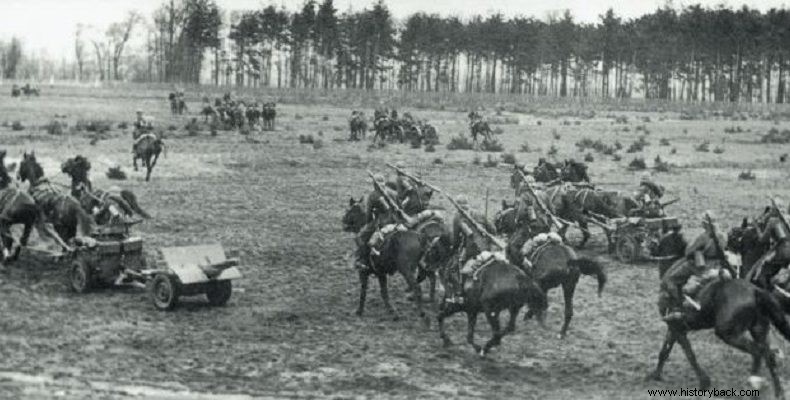
The Battle of the Bzura River was the most important attempt by the Poles to reverse the situation against them as it was shaped by the German invasion in September 1939.
The Polish defense plan was flawed from the start as it provided for the defense of the entire national territory by seven army-level formations, anticipating a French attack against the Germans. The Poles deployed from the North the Pomorze (Pomeranian) Army under General Władysław Bordnowski (5 Infantry Divisions, 1 Cavalry Brigade, 2 border brigades), the Poznań Army under General Tadeusz Kuczema (4 Infantry Divisions and 2 Cavalry Brigades) , the Army of Łódź and the Army of Cracow.
The Germans attacked north with the 4th Army from Pomerania and the 3rd Army from East Prussia. Receiving blows from two directions, the Polish Army of Pomerania retreated to the southeast. At the same time the Germans had split the Lodz and Kraków armies and were behind the lines of the Poznań Army.
So Kurceba was also forced to retreat in order not to be surrounded. On September 6 the two retreating Polish armies were united under the leadership of General Kurczema. The next day, having noticed the German movement to encircle them.
The Germans, however, had lost contact with the Army of Poznań and assumed that its forces had been moved east to strengthen the defenses of Warsaw. They did not know that the two Polish armies had joined. They had also underestimated the Pomeranian Army which they had already defeated at the Battle of Bory Tukolskie and considered no longer a serious threat.
As 8 September dawned the Germans were confident that they had neutralized all organized Polish resistance west of the Vistula River and the Bzura tributary. Thus they were preparing to cross the Vistula advancing towards Warsaw, before which their advance guards had already arrived.
Opposing Forces and Plans
Knowing that the German 8th Army had already crossed the Bzura to the south of the forces and the German 4th Army had crossed the Vistula to the north, Kurceba decided to act on his own, having lost all contact with the commander-in-chief, Field Marshal Rytns Schmigli. Kurceba had earlier suggested to the commander-in-chief that his army attack southwards, to relieve Lodz's Army, but unfortunately he had not been listened to.
However, the plan was ready and he decided to implement it by hitting the German 8th Army on its exposed left flank. Kurcheba had a total of 9 Infantry Divisions (IP) and 3 Cavalry Brigades (sources do not completely agree) with a total strength of 225,000 men. On the German side, 17 divisions of the 4th, 8th and 10th Armies with more than 400,000 men were involved in the battle.
The counterattack
On the evening of September 9 the Poles launched their initial attack against the German 8th Army at Bzura. The initial blow was received by the German 24th and 30th MPs, which faced the Polish 14th, 17th, 25th and 26th MPs of the Knoll-Kownacki Corps, which were flanked by two TIs (TI Podolska and TI Wielkopolska) reinforced with a few light tanks TKS and TK-3.
The German divisions were caught by surprise and suffered 4,500 casualties. The Germans retreated to a depth of 20 km. The next day the attack continued and the German 17th MP which tried to intercept it also retreated.
The German administration had dramatically underestimated the Poles. If the Germans had not been overwhelmingly outnumbered and outgunned, or if the Poles had had strong fast moving forces, perhaps the course of the war would have been different.
It was not until September 11 that the Germans realized the magnitude of the threat and threw the 10th Army into the battle to stop the counterattack, which had, among other units, the powerful 1st Panzer Division (MPa) and the 4th MPa, as well as the regiment, then , Leibstandarte Adolf Hitler. The Germans also had absolute air superiority.
Nevertheless the Poles, heroically, continued to advance hoping to meet what was left of Lodz's Army. But when Kurcheba was informed that the army in question had badly - badly retreated to the east, he decided to stop the attack which no longer had a strategic reason.
Destiny ending
After this the Poles decided to retreat east. The Army of Pomerania moved east with the aim of reaching Warsaw. The Germans now threw against it their two panzer divisions, one motorized and three light, with a total of 800 armored (The light divisions had armored and motorized elements and after the Polish campaign they were converted into MPa).
From 16 September the Germans, closely supported by their air tactics, attacked the brave Poles from all directions. After fierce fighting the Poles were reduced to a triangle between the Vistula, the Bzura and the Germans. The German 1st Infantry Division attempted to cross Bzura at Sokachev and succeeded but were eventually held back by the Polish 25th Infantry Division.
The Poles attempted to escape the cordon by crossing the Vistula north of its confluence with the Bzura in order to reach Warsaw. On the evening of September 17, the forces of the Army of Poznań attacked with the aim of breaking the cordon. The Poles managed to cross the river but at first light the German planes literally cut them to pieces.
Nevertheless they continued to fight for two more days . Some units of the two Polish armies managed to escape and take refuge in Warsaw and Maudlin. They were the remnants of the 15th and 25th MPs and TI Podolska and Wielkpolska. General Kurcheba and Knoll Kowatski and Tokarchevski were with them.
The 4th, 14th, 17th, 26th and 27th MPs along with Bortnovsky continued to fight hopelessly until 22 September. Then they laid down their arms. The Poles had 20,000 dead, including three generals. Also 32,000 of their men were wounded. A total of 170,000 Poles were captured.
The Germans had 8,000 dead and 4,000 prisoners who were released after the Polish capitulation. They also lost about 150 tanks and armored vehicles and 20 cannons.
The glorious battle of Bzura did not change the course of things. The only thing the brave Poles achieved with their sacrifice was to delay the German advance towards Warsaw for a few days, giving time to its defenders.
However, the balance of forces was so much in favor of the Germans that victory was out of the question. After all, the Soviets had already started, from September 17, to give the Poles a free shot, invading from the east.
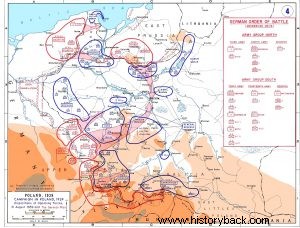
Poland 1939. The initial concentration of opposing forces.
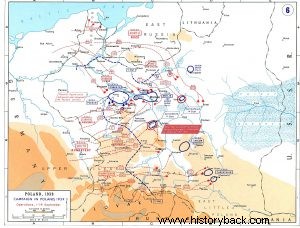
Poland 1939. The second phase of operations.
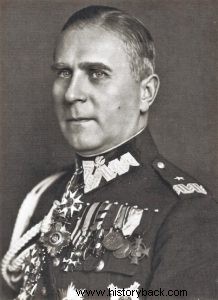
The Polish general Tadeusz Kurczema.
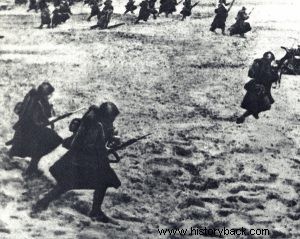
Polish infantry sortie.
